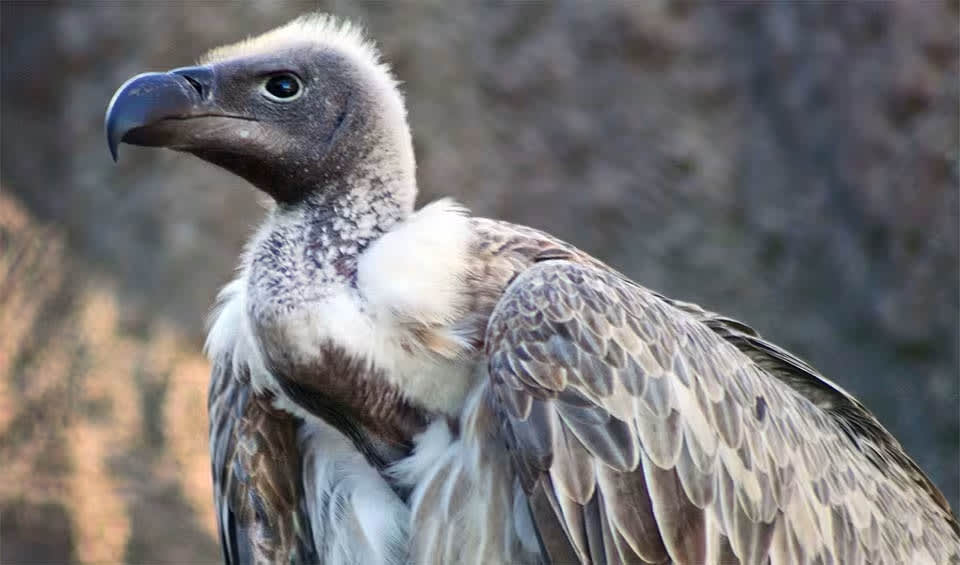Characterized by its distinctive white plumage on the back contrasting with its dark feathers, this majestic bird of prey commands attention as it soars gracefully through the African skies.
White-backed vultures are characterized by their impressive wingspan, which can reach up to 2.6 meters (8.5 feet). They have dark brown or black plumage, with a distinctive white patch on their backs, giving them their name. Their heads and necks are often bare, with a yellowish or pinkish skin coloration. They are social birds and are often seen in groups, soaring high in the sky in search of food
As nature’s clean-up crew, white-backed vultures play a crucial role in maintaining the balance of ecosystems. Specialized scavengers possess a robust build and large wingspan that enable them to cover vast distances in search of carrion. Their keen eyesight allows them to spot carcasses from great heights, while their bald heads and long, curved beaks are perfectly adapted for tearing through tough flesh, facilitating access to nutrient-rich meals.
In addition to their physical adaptations for scavenging, white-backed vultures have developed physiological mechanisms to cope with the challenges of their scavenger lifestyle. Their powerful digestive systems are capable of breaking down and neutralizing harmful bacteria and toxins present in decaying flesh, ensuring their survival despite the potential risks associated with their diet.
Distribution
 Angola
Angola Benin
Benin Botswana
Botswana Burkina Faso
Burkina Faso Burundi
Burundi Cameroon
Cameroon Central Af. Rep.
Central Af. Rep. Chad
Chad Côte D’ivoire
Côte D’ivoire DR Congo (Kinshasa)
DR Congo (Kinshasa) Eritrea
Eritrea Eswatini
Eswatini Ethiopia
Ethiopia Gambia
Gambia Ghana
Ghana Guinea-Bissau
Guinea-Bissau Guinea
Guinea Kenya
Kenya Lesotho
Lesotho Liberia
Liberia Malawi
Malawi Mali
Mali Mauritania
Mauritania Mozambique
Mozambique Namibia
Namibia Niger
Niger Nigeria
Nigeria Rwanda
Rwanda Senegal
Senegal Sierra Leone
Sierra Leone Somalia
Somalia South Africa
South Africa South Sudan
South Sudan Sudan
Sudan Tanzania
Tanzania Togo
Togo Uganda
Uganda Zambia
Zambia Zimbabwe
ZimbabweAnything we've missed?
Help us improve this page by suggesting edits. Glory never dies!
Suggest an editGet to know me
Terrestrial / Aquatic
Altricial / Precocial
Polygamous / Monogamous
Dimorphic (size) / Monomorphic
Active: Diurnal / Nocturnal
Social behavior: Solitary / Pack / Herd / Committee
Diet: Carnivore / Herbivore / Omnivore / Piscivorous / Insectivore
Migratory: Yes / No
Domesticated: Yes / No
Dangerous: Yes / No




